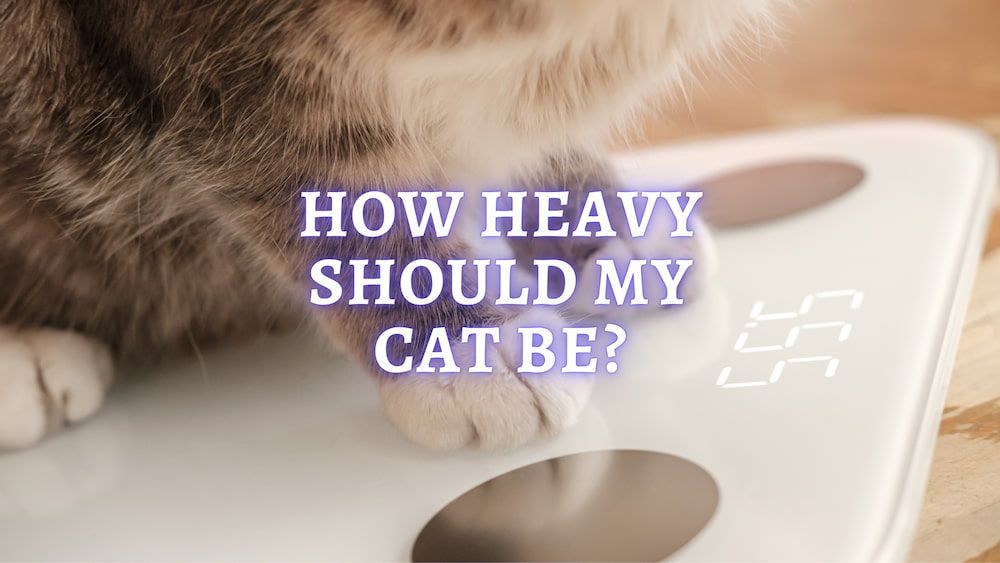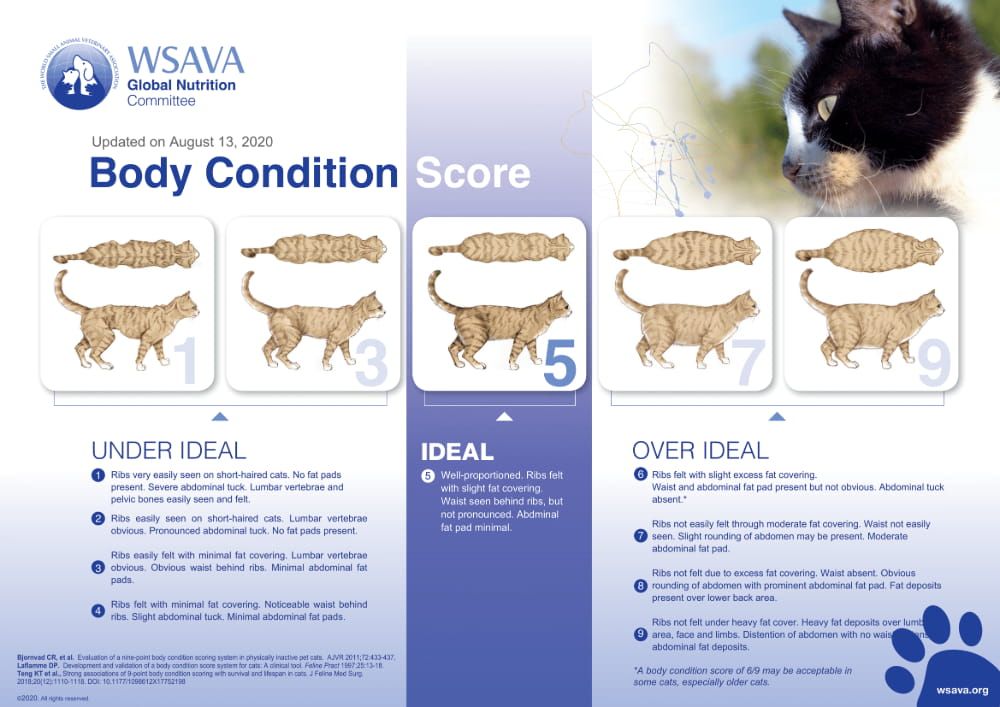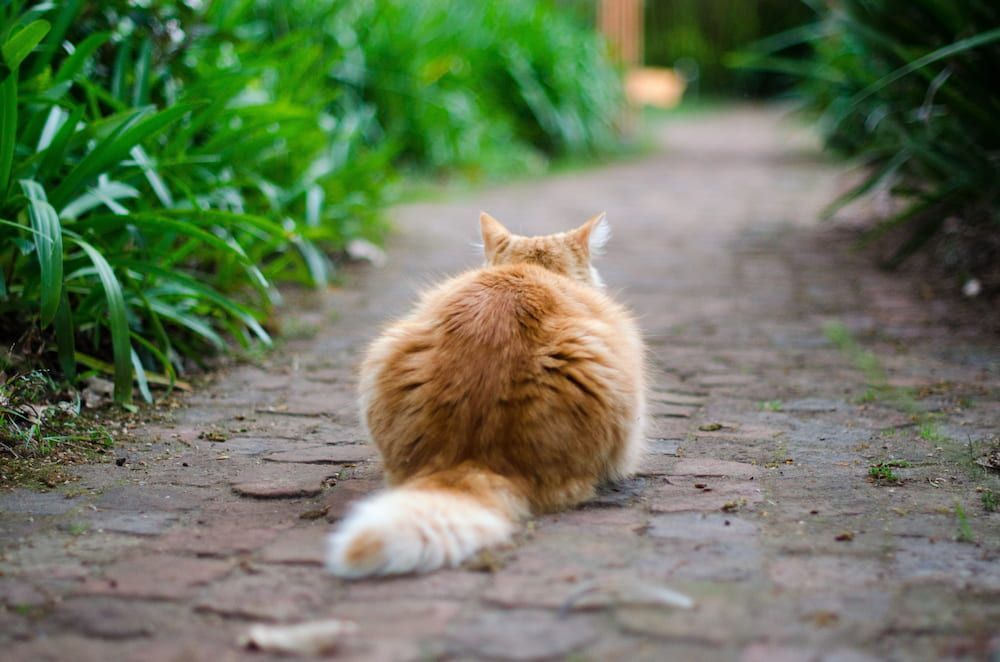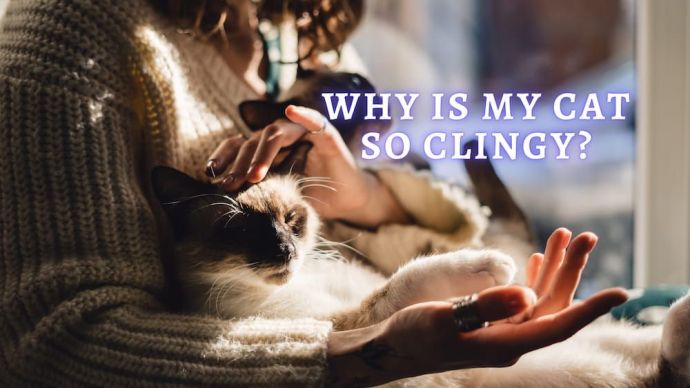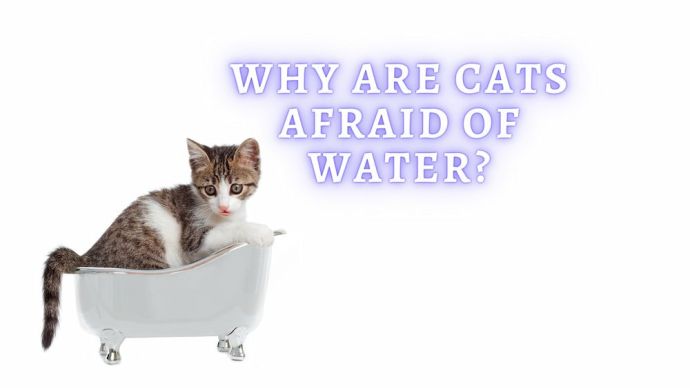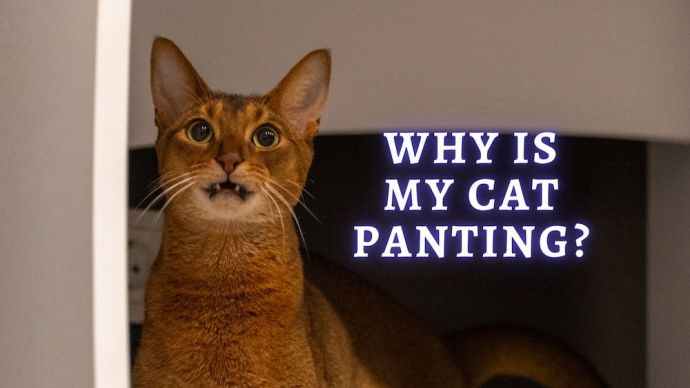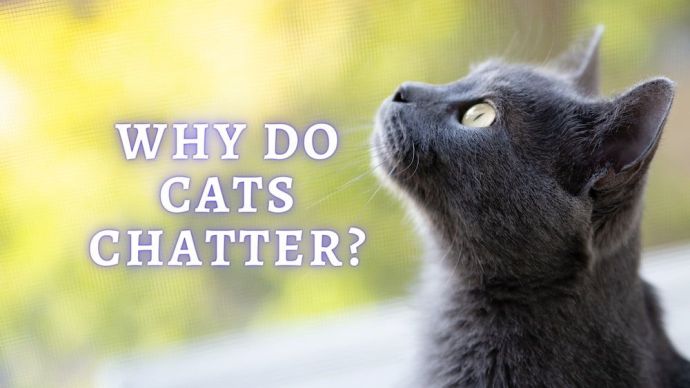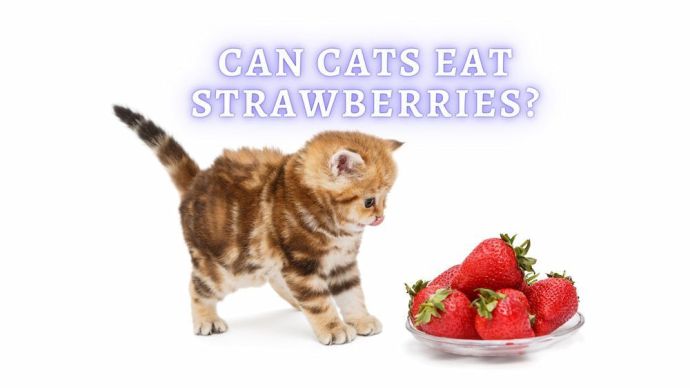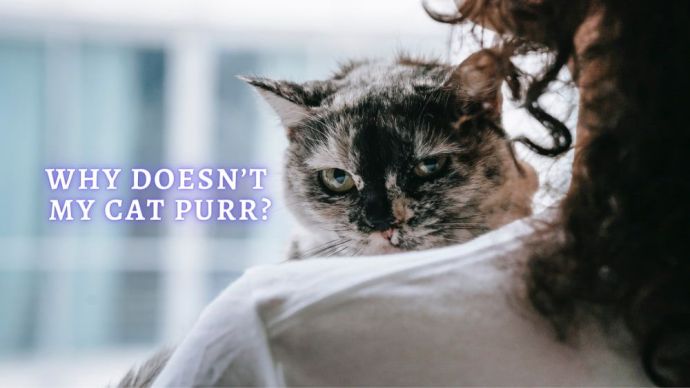How Heavy Should My Cat Be? Tips on Finding Ideal Cat Weight
Written by:
Author: Seb Jenkins
Seb is a professional SEO writer with a degree in Journalism, he has five years of experience in writing and editing. Seb specializes in topics like dog and cat breeds, aquarium guides, and pet care. He is passionate about educating and entertaining animal owners worldwide. In his spare time, Seb enjoys writing fiction novels.
View all 83 articlesLearn about our editorial process and veterinary review board.
Viewed: 117
Updated on: 06/08/2023
Just as we all keep one eye on our own weight and what that means for our general health, cat owners should also pay attention to the weight of their feline friends.
Let’s be honest, all pet owners have a desire to feed their beloved animals as much as they want to eat, but that isn’t usually the healthiest thing for them. While it may seem harmless to give your pet a few extra treats here and a special meal there, those extra calories can soon add up.
Just a few extra pounds on the belly of such a small animal can have consequences on their long-term health. For example, heavier cats are actually more at risk of health problems like diabetes, cancer, pancreatitis, and arthritis.
Therefore, finding a healthy balance between treating your pet and providing them with a healthy way of life is important. Fortunately for you, we have developed an all-you-need-to-know guide on cat weight.
How do I know when my cat is too heavy or too skinny?
As weight norms differ for every pet and every breed, the best way to determine whether they are at a healthy weight is to use visual clues. For example, you should not see any visible fat deposits on your pet, while ribs should also not be in view. Your cat should be able to run and jump around as normal without heavy breathing. We have designed a chart below for you to understand every stage of the weight.
Significantly underweight – Life-threatening
- They don’t seem to have much energy.
- The stomach tucks in a lot.
- Their tailbone has no padding.
- You can see their ribs clearly.
- The fur looks dull.
Underweight
- There is only a little bit of padding on their tailbone.
- Their stomach tucks in a lot.
- You can see their ribs clearly from the side, although maybe not from above.
Perfect
- They have lots of energy.
- Their tummy only tucks in a little.
- Their coat looks healthy and vibrant.
- Their tailbone is padded.
- You can barely see their ribs, even from the side.
Overweight
- You cannot see their ribs at all.
- They have a round abdomen due to fat.
- When you look down from above, their back half is bulged.
- You can’t really see a visible waist.
RELATED: Why Is My Cat Fat? (Vet Explain)
Obese – Life-threatening
- You cannot see their ribs at all.
- They have very little energy.
- They have heavy breathing.
- Their abdomen is very rounded due to fat.
- You can see clear deposits of fat on them.
The Body Condition Score chart
In humans, we have the Body Mass Index to analyze our weight and how healthy we are, and there is actually a pet equivalent to it too. This is the Body Condition Score, [1], and it ranks cats from 1 to 9 or severely underweight to severely obese. Some vets may also use a 1-5 Body Condition Score table, but the concept remains the same. When using the 1-9 scale, a healthy feline should fall between 5 and 6. Cats between 1 and 4 are underweight, and pets between 7 and 9 are overweight. The closer your pet is to the extreme ends of the scale, the more life-threatening the condition is.
How does gender affect cat weight?
The gender of your pet often makes a difference when it comes to their optimum healthy weight, just as it does with humans. Male cats are usually bigger than female cats; therefore, the healthy weight of a male pet is usually higher than a female’s.
If your cat has not been neutered or spayed yet, they are likely to have a higher metabolism and will be better able to maintain a healthy weight. Therefore, you should put more effort into portion control and exercise after your cat has been neutered or spayed.
However, there is no one-size-fits-all rule for male and female pets, so we recommend getting a more individual diagnosis from your vet. They should also be able to help you design a healthy routine and diet for your feline friend.
How does breed affect cat weight?
There is no ideal weight for a cat due to the number of different breeds and their respective body types. When you have one breed like the Siamese that can have a healthy weight of five pounds, compared to the Maine Coone that can have a healthy weight of 25 pounds, it becomes impossible to find a one-size-fits-all rule.
That being said, there are recommendations on weight from the Association for Pet Obesity Prevention, broken down into different breed types for pets:
- Maine Coon – 10 to 18 pounds
- Persian – 7 to 12 pounds
- Domestic – 8 to 10 pounds
- Siamese – 5 to 10 pounds
However, these are only estimates, and healthy weights can vary among different cats and breeds. Therefore, we again recommend that you get a more individual diagnosis from your vet, who should also be able to help you design a healthy routine and diet for your feline friend.
How to design the perfect diet plan for your cat
It is important to design a healthy diet and exercise plan for your individual cat to ensure it meets their personal needs. The focus of the plans, of course, will revolve around where your pet features on the Body Condition Score. Underweight cats need food that is high in nutrients, proteins, and calories.
If you are dealing with a kitten that needs the right kind of food to promote growth in order to get them to their ideal weight, we recommend a combination of dry and wet food that is high in calories and protein. This will increase their appetite and help them to grow into strong and healthy adult cats. If they are unable to finish the portions you are providing, give them lots of small meals throughout the day rather than two or three big ones.
Don’t watch them eat as this can cause anxiety in some pets. If they do not seem to like the food, try warming it up in the microwave. Choose their favorite location and bowl to ensure they are comfortable. Keep food and water away from the litter box. As a general rule for both under and overweight cats, you should only ever make small changes to their diet at a time to reduce stress.
The food should also be chosen depending on the age of your pet, as brands like to cater for different age groups such as kittens, adults, seniors, pregnant cats, and lactating cats.
If your cat is on the higher end of the Body Condition Score, you should look for specific cat food promoting weight loss. These foods are usually high in protein to fill your cat up quicker, with additional healthy vitamins, minerals, and nutrients.
How to design the perfect activity plan for your cat
For overweight cats, you should look to promote exercise as much as possible. However, make changes in small doses to reduce any stress or shock to their system. Keeping your cat well exercised helps them maintain a healthy weight and reduces the risk of depression.
Playtime can be a great way to convince your cat to exercise and we recommend 15-20 minutes daily. Investing in feathers, interactive toys, puzzles, and laser pointers can be a great way to get those feline legs moving.
If your pet is an outdoor cat, then letting them roam free is a great way for them to get some extra steps in. If your cat is not trained to roam free outside, then providing an enclosed outdoor space can be a good option.
If your kitty is underweight, exercise is still extremely important. Just remember that they may be weak and devoid of much energy to start with, so take small steps. As long as you make gradual improvements to their exercise routine alongside their diet, they should get some extra energy before long.
READ MORE: Cat Exercise: How much Exercise does a Cat need?
How to help a cat gain weight?
As we outlined above, there are several ways to help your underweight cat to gain weight:
- Increase portion size
- Smaller meals more often throughout the day
- Additional exercise to promote health and growth
- More nutrients, protein, and calories.
RELATED: How To Fatten Up A Skinny Cat?
How to help a cat lose weight?
As we outlined above, there are a number of ways to help your overweight cat to lose weight:
- Reduced portion size or fewer meals;
- Lower calorie food;
- Wet food instead of dry;
- High protein to fill them up quicker;
- Exercise;
- Playtime;
- Food puzzles.
READ MORE: Best Cat Food for Weight Loss
How quickly should I introduce the new diet to my cat?
Generally, you should spend three weeks transitioning from one diet to another. To start with, you can take the new food and provide a small taster sample of it in a bowl next to the original food. It may take them a while to start eating it but be patient. When they try it, mix a quarter of the new diet with three-quarters of the old diet at mealtime. Slowly increase the ratio of the new diet over time.
How often should my cat come in for a check or weigh-in?
Once you and your vet decide to put your furry friend on a weight loss or weight gain plan, it is important to keep an eye on them to determine whether the new routine is actually working. Therefore, you should take your feline friend in for weighing once every month until they reach their goal weight. Remember, every cat is different. There is a chance that your diet and exercise plan will not work the first time around or may need tweaking as you go. That is all part of the process. The general rule is that you want your pet to lose 1 to 2 percent of their body fat each week and if there is no significant improvement in four weeks, changes need to be made.
What to do if I have more than one cat and only one is overweight or underweight?
This is a common problem. If one of your cats is at a healthy weight and the other is overweight, for example, you don’t want to change both of their diets. Many owners feed all their pets together, so it can be difficult to change a diet to one and not the other.
Though not always ideal, feeding your cats separately is best. You can have a set room where you feed both cats but give them different regular feeding time slots. For example, you might feed the healthy cat at 6 pm, then clear up whatever leftovers there are and feed your overweight kitty at 6:15 pm.
You can also put your healthy food up high or in a space too small for your overweight kitty to reach, if that is possible. There are even automatic feeders you can purchase now that will only dispense food to a certain pet if they have the correct microchip.
Article Sources
- “Cat’s Body Condition Score .” World Small Animal Veterinary Association, wsava.org/wp-content/uploads/2020/08/Body-Condition-Score-cat-updated-August-2020.pdf.
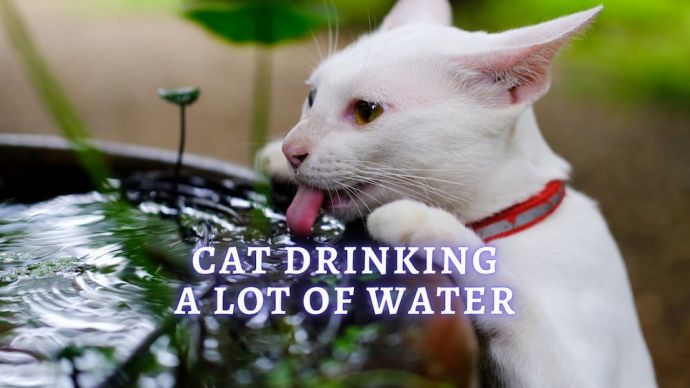 Cat Care Cat Drinking a Lot of Water: Health and Behavior Reasons Why Your Cat Drinks So Much
Cat Care Cat Drinking a Lot of Water: Health and Behavior Reasons Why Your Cat Drinks So Much - 430
- 0
 Cat Care Why Does My Cat Attack My Legs? 10 Reasons Why and What To Do About It (Vet-Approved Advice)
Cat Care Why Does My Cat Attack My Legs? 10 Reasons Why and What To Do About It (Vet-Approved Advice) - 46013
- 21
 Cat Veterinary Tips Cat Stomach Gurgling: Vet Advice on Why is Your Cat Stomach Gurgling?
Cat Veterinary Tips Cat Stomach Gurgling: Vet Advice on Why is Your Cat Stomach Gurgling? - 36469
- 4
 Cat Veterinary Tips My Cat Lost its Voice: Can Cats get Laryngitis? (Vet Advice)
Cat Veterinary Tips My Cat Lost its Voice: Can Cats get Laryngitis? (Vet Advice) - 23554
- 13









